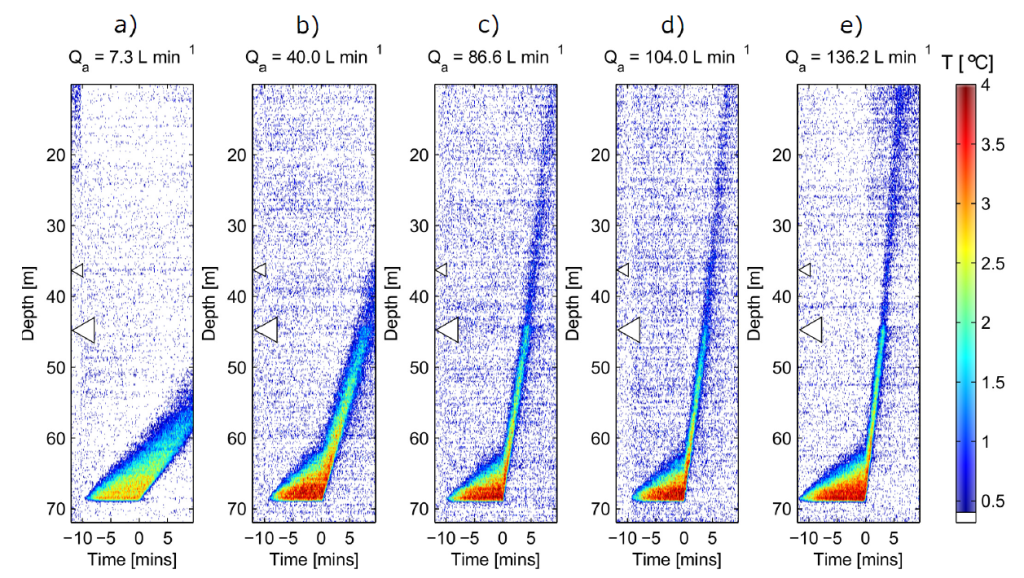Thermal-plume fibre optic tracking (T-POT) test for flow velocity measurement in groundwater boreholes

We develop an approach for measuring in-well fluid velocities using point electrical heating combined with spatially and temporally continuous temperature monitoring using distributed temperature sensing (DTS). The method uses a point heater to warm a discrete volume of water. The rate of advection of this plume, once the heating is stopped, equates to the average flow velocity in the well. We conducted thermal-plume fibre optic tracking (T-POT) tests in a borehole in a fractured rock aquifer with the heater at the same depth and multiple pumping rates. Tracking of the thermal plume peak allowed the spatially varying velocity to be estimated up to 50m downstream from the heating point, depending on the pumping rate. The T-POT technique can be used to estimate the velocity throughout long intervals provided that thermal dilution due to inflows, dispersion, or cooling by conduction does not render the thermal pulse unresolvable with DTS. A complete flow log may be obtained by deploying the heater at multiple depths, or with multiple point heaters.
(T. Read1, V. F. Bense2, R. Hochreutener4, O. Bour3, T. Le Borgne3, N. Lavenant3, and J. S. Selker4)

Temperature distribution with depth and time for T-POT tests at abstraction rates of (a) 7.3, (b) 40.0, (c) 86.6, (d) 104.0, and (e) 136.2 L min-1. The temperature data have a background profile subtracted, with the lower limit to the colour scale starting 1 standard deviation (from reference bath temperature measurements) above the 0°C change.
Download: WP30_GI_Read_PLoemeur
- School of Environmental Sciences, University of East Anglia, Norwich Research Park, Norwich, NR4 7TJ, UK
- Hydrology and Quantitative Water Management Group, Department of Environmental Sciences, Wageningen University, 6700 AA Wageningen, the Netherlands
- Géosciences Rennes, UMR6118 – CNRS, University of Rennes 1, Rennes, France
- Biological and Ecological Engineering, Oregon State University, Corvallis, OR 97331, USA
